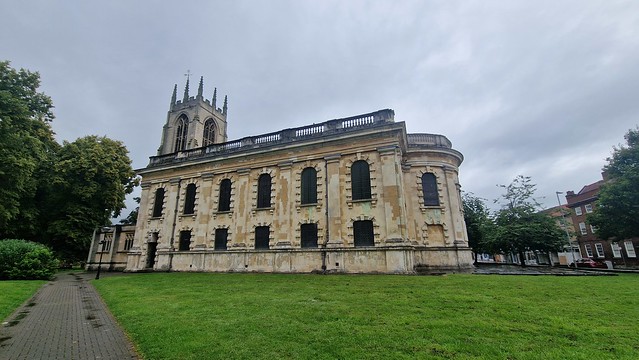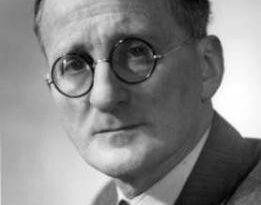Gainsborough – All Saints Church
This church looks a little out of proportion as the nave and chancel were entirely rebuilt between 1734 and 1744 when the previous structure was thought to be too dark and dingy, but the tower, which dated from the fifteenth century, was kept. After three years of construction, the new church opened on 16 September 1744 and it reminds me of how some of the slightly later churches in the United States, such as Old North Church in Boston, look.
The church is kept locked, but you can request the key from the cafe on-site, which I did. It’s well proportioned internally and I can imagine the excitement when it opened, with its two levels of seating and plenty of space. It’s certainly bright, which would have been in contrast to the previous building.
Looking back to the organ. The chandelier is a survivor from the previous church.
The pulpit, which was installed in 1869.
It’s spacious and would have been able to cater for several hundred worshippers. The National Churches Trust notes that:
“The architect of the present building was Francis Smith of Warwick (1673-1738) who was greatly influenced by James Gibbs, the designer of St Martin in the Fields, Trafalgar Square.”
The height of the box pews were reduced by 12 inches in the 1860s.
Alan Stephenson, who served as the organist here for twenty years between 1913 and 1933. He was also the last organist to play at Coventry Cathedral before its organ was destroyed during the 14 November 1940 air raid.
The eighteenth century benefactors.
The memorial to Francis Elliott, who had served as the District Commissioner of Jubaland. He was the son of the Rev. Canon J. R. Elliott, M.A., of 1, Greenstone Place, Minster Yard, Lincoln and Francis died at the age of 35 on 2 February 1916. He’s buried at the Mogadishu African War Cemetery where there are 182 burials, but the Commonwealth War Graves Commission is currently unable to access the site. Unfortunately, the site has been desecrated and the graves destroyed and vandalised, there’s more at https://adeclewlow.com/2018/11/07/discovering-the-commonwealth-war-graves-cemetery-in-mogadishu/.
The entrance to the church.
What I assume is the entrance to the bell tower.
The tower, which I think is the most magnificent part of the structure. The authorities had to raise money in 1871 for the church’s protection as they were worried about bits of it falling down, which was considered sub-optimal. Also, a local cabinet maker, Mr. Knighting, had been walking across the church yard on a dark Sunday evening and a slab gave way and he nearly plummeted three feet down into a vault, located near to the base wall of the tower.
The graveyard, stripped of all its gravestones. There has been some controversy about this and the idiotic decision was enacted in 1961, stripping the area of its historic relevance and interest. They said at the time that it tidied the area up as it had become overgrown and gravestones were damaged. I mean, perhaps repair the gravestones and cut the grass? Anyway, it’s a memorial garden now.
Richard Rollett’s gravestone was saved as it was thought to be of interest as he was the master sail maker on HMS Resolution, which Captain James Cook captained. The Captain Cook Society has more information on the life of Rollett at https://www.captaincooksociety.com/cooks-life/people/cooks-officers-and-crew-and-contemporaries/richard-rollett-1750-1824. Although that’s it, the rest of the stones and their memories have gone.
It’s a wonderful example of eighteenth century church architecture, although there’s surprisingly little history here to see beyond that. They’ve knocked the old church down, the tower is inaccessible and the gravestones have been removed. Pevsner was very rude about Gainsborough, but he didn’t make any personal comment on his thoughts of the church’s architecture.


















